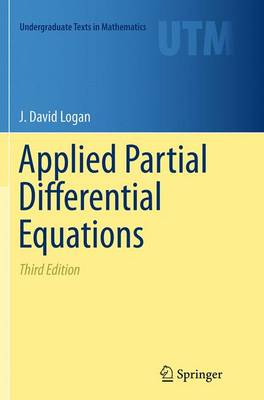Undergraduate Texts in Mathematics
2 total works
This textbook is for the standard, one-semester, junior-senior course that often goes by the title "Elementary Partial Differential Equations" or "Boundary Value Problems". The audience consists of students in mathematics, engineering, and the sciences. The topics include derivations of some of the standard models of mathematical physics and methods for solving those equations on unbounded and bounded domains, and applications of PDE's to biology. The text differs from other texts in its brevity; yet it provides coverage of the main topics usually studied in the standard course, as well as an introduction to using computer algebra packages to solve and understand partial differential equations.
For the 3rd edition the section on numerical methods has been considerably expanded to reflect their central role in PDE's. A treatment of the finite element method has been included and the code for numerical calculations is now written for MATLAB. Nonetheless the brevity of the text has been maintained. To further aid the reader in mastering the material and using the book, the clarity of the exercises has been improved, more routine exercises have been included, and the entire text has been visually reformatted to improve readability.

